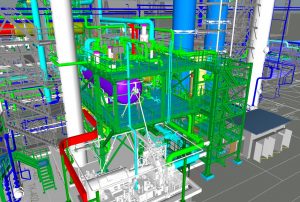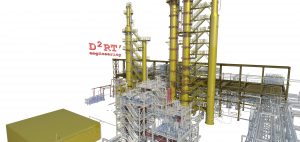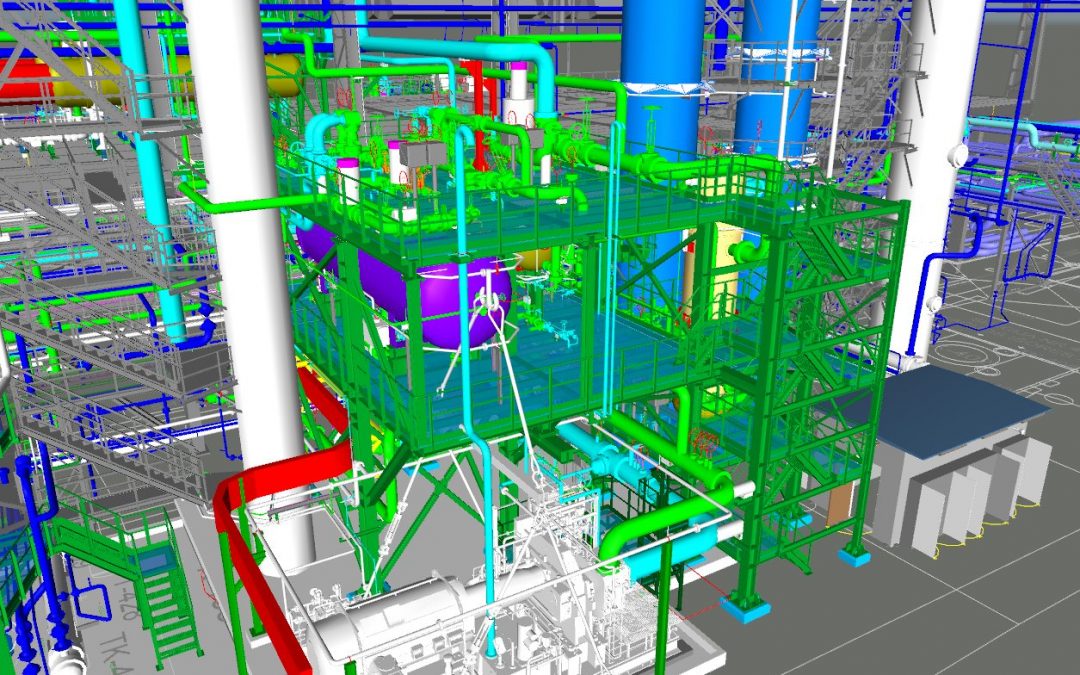The current pandemic combined with the unprecedented fall in oil prices this year, has pressed the world’s fast-forward button, especially when it comes to how the EPCs (engineering, procurement & construction companies) will adapt to this new world order. Realistically, EPCs, like many other industries, are now facing more than ever, or at least more than in the last half-century, a real challenge to quickly “adapt or die.” All of a sudden, adoption of EPC 4.0 (Industry 4.0) is not optional anymore and is of immediate importance.
How then, can EPC companies adapt to the current scenario and continue to support effective project execution across the industries? By digitizing technology stack.
It is key to look for a balance between the people, processes, and technologies when considering any system implementation. That is because it is impossible to have tools/technologies that make all professionals happy and that fit in all of the company’s processes. It is possible to develop this in-house, but starting a tech company inside an EPC would seem a waste, as this brings a lot of extra costs not related to the EPC business. Rather than inventing the wheel yourself, you can rely on trust-worthy vendors.
Below you can read a real-life project example from D2RT Engineering, a Lithuanian-Polish engineering company who improved their engineering processes with the help of Hexagon PPM division’s solutions.
Identifying Goals
D2RT Engineering is a Lithuanian/Polish engineering services company operating in industrial settings, covering process, mechanical, and civil engineering. To maintain cost-effective and on-time delivery of complex and challenging projects, the main goal of the company was to adopt digital solutions. This would help enable speedy engineering and design processes while having verified detailed project plans in place.
This article discusses the Propane-Propylene Fraction (PPF) splitter revamp project at the oil refinery ORLEN Lietuva (OL) that D2RT was selected for.
Having user-friendly digital tools that integrate and are flexible was essential for D2RT. This would allow increased productivity during the different design and project phases, enabling the oil refinery revamping and implementation of a PPF splitter to be executed faster. Additionally, this would provide greater efficiency and more economic project management with error-free designs.
Overcoming Challenges
Due to increasing demand for propylene, the client considered the implementation of the PPF splitter, which would help to increase variable margins and improve their competitive position. After an economical evaluation, installing a new PPF splitter was considered an unattractive financial option. Therefore, a smaller unit, based on the existing gas plant equipment, was selected as the best way forward.
To lower CapEx costs for the installation of the PPF splitter, D2RT Engineering’s client wished to utilize and revamp the existing mothballed gas plant and reuse as much of the existing equipment as possible. This involved reassessment services of existing equipment with the aim to determine if the equipment was fit for service.
Reassessment services required a comprehensive analysis to evaluate and monitor equipment for continued operation. Common evaluation “by formula” in this particular case was too conservative, as it usually results in high stress levels of piping and equipment systems that are outside the limits for the materials as defined in the applicable codes. Therefore, FEA modeling and analysis had to be utilized, which in most cases, is too complicated and time-consuming.
D2RT Engineering was aware of the analysis and testing of equipment that would be required and had already used Hexagon software in the past. No complicated, time-consuming operations would have to be carried out by the user when utilizing the bundle of solutions Hexagon for the complex project tasks.
An example of an initial pipeline ISO.
Realizing Results
The starting point of the project involved using Hexagon’s CADWorx® design environment to model existing and new piping, equipment, and steel structure for the PPF splitter. From there, the CAESAR II® file of the piping was exported for further stress evaluation before moving forward with the final approved file. Once the CAESAR II file was ready, the FEATools enhancement was applied to all relevant branch connections and the elbows in order to make the design more accurate and simultaneously safer.
Additionally, piping loading values on the faces of the equipment nozzles were taken from CAESAR II and used within Hexagon’s Visual Vessel Design for further evaluation. In case nozzle loading conditions did not meet the requirements i.e., greater than specified allowable loads or greater than defined in the codes, either piping redesign was implemented, or further analysis within NozzlePro environment would be carried out. The NozzlePro application enabled further analysis utilizing Finite Element Analysis (FEA) of individual pressure vessels and components with an automated code compliance reports for ASME Section VIII – Division 2 stress categories.

An example of the rendered image of the designed unit.
Moving Forward
Hexagon solutions were chosen because of their ease of use, quick adoption by the team, and ability accurately and quickly perform a range of different tasks required within the client’s project. The most significant benefit has been the optimization of work processes with the new solutions enabling a quicker project outcome due to increased efficiency and integration.
Greater time savings have been achieved with the ability to easily export/import files through the different solution applications. D2RT Engineering can now provide shorter project time frames and faster execution of the projects.
D2RT Engineering will continue using Hexagon solutions in its upcoming projects to ensure productivity and quality, with error-free designs.
To learn more about CADWorx & CAESAR II, you can watch our latest on-demand webinars: The world’s most widely used Pipe Flexibility & Stress Analysis Software or Discover the ideal Plant Design Solution

